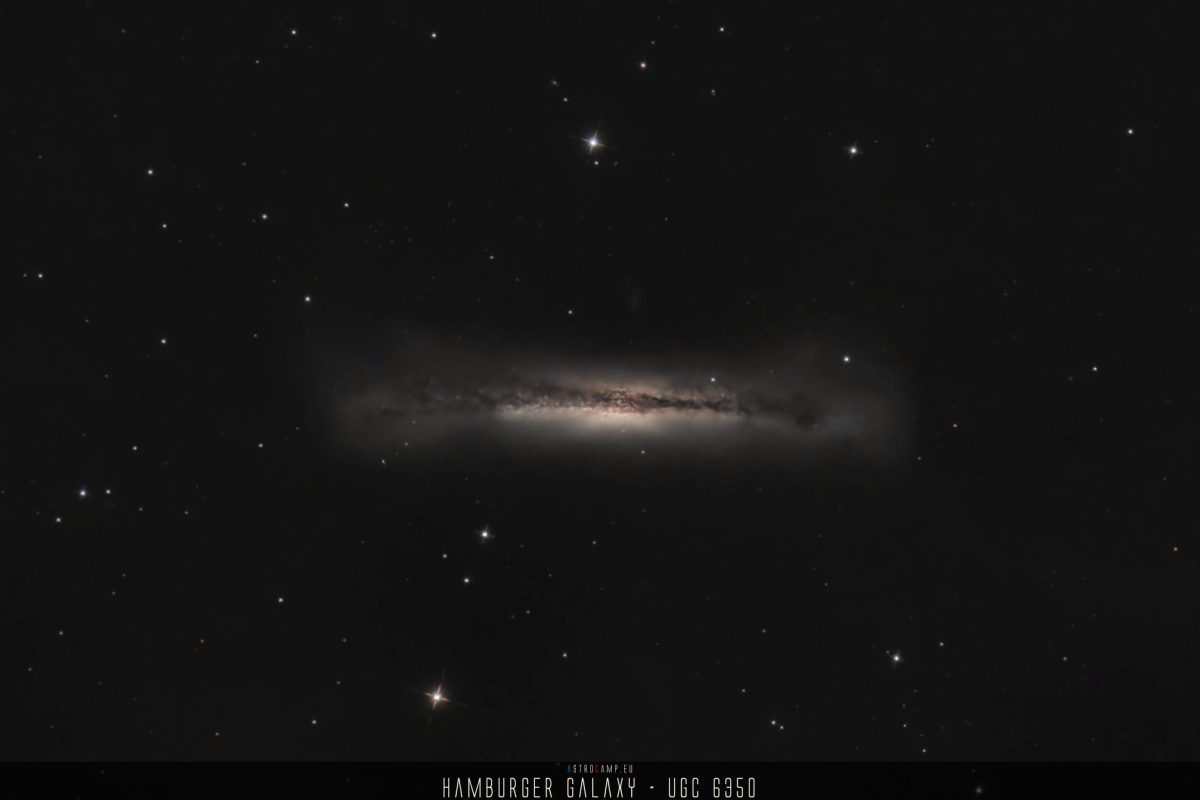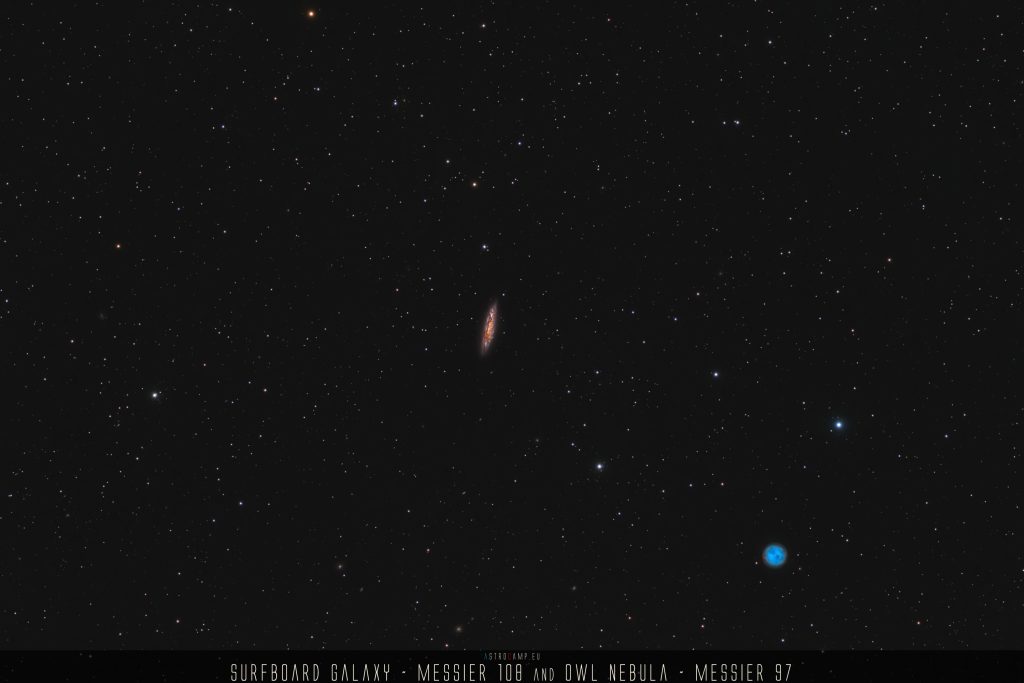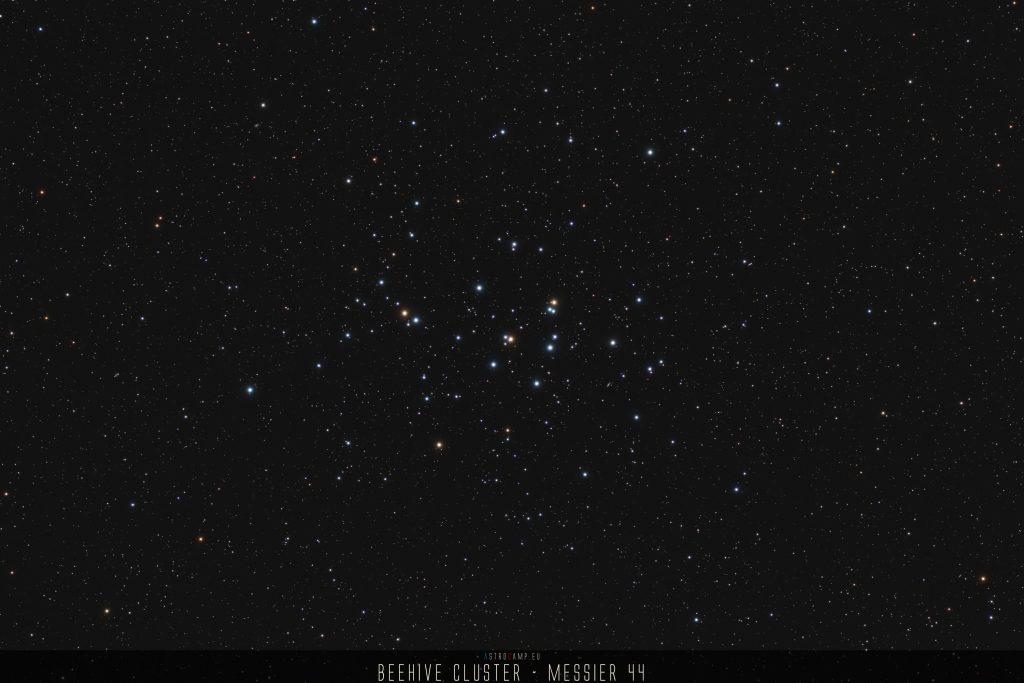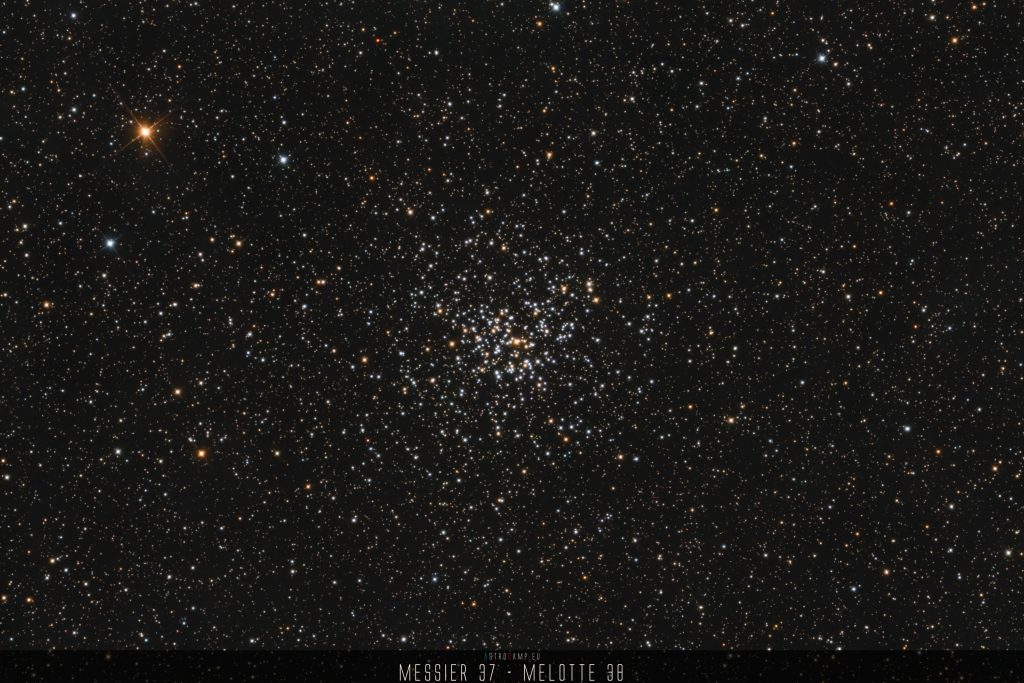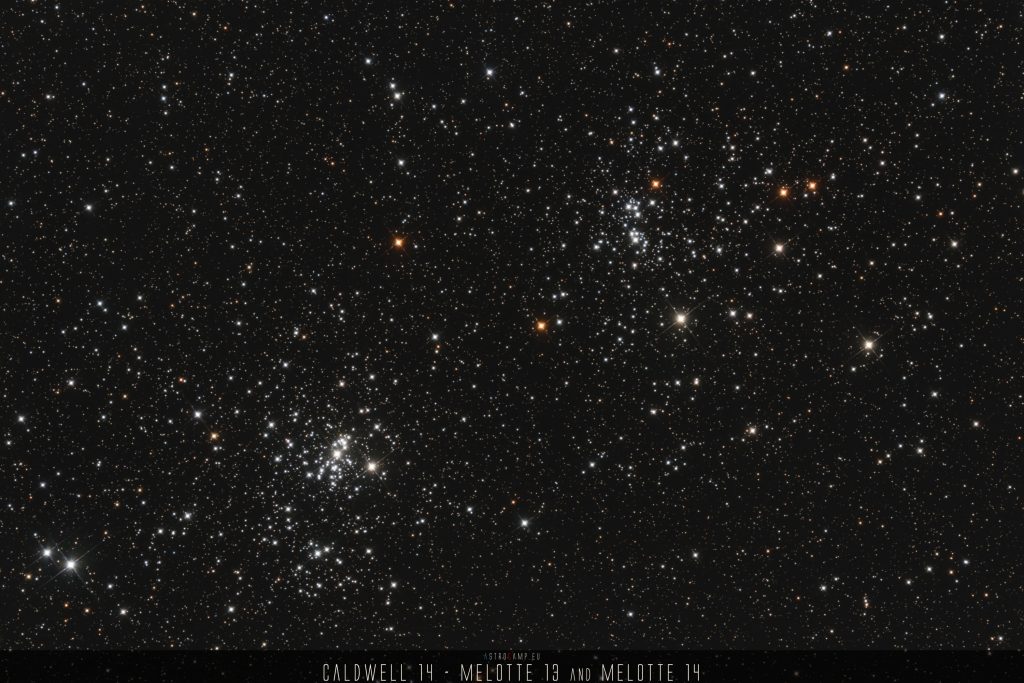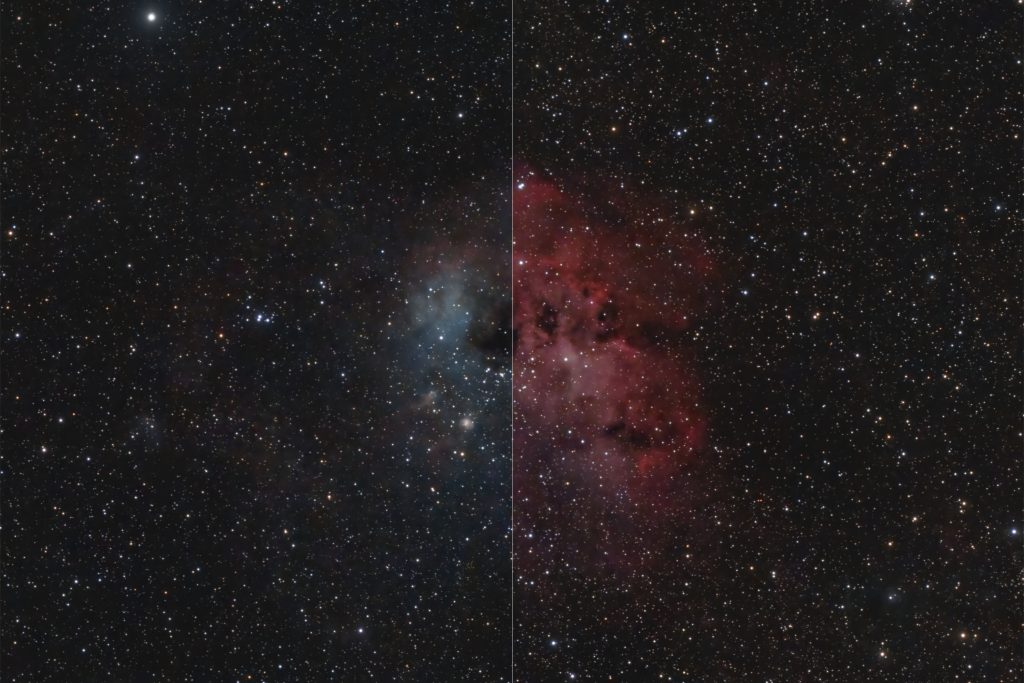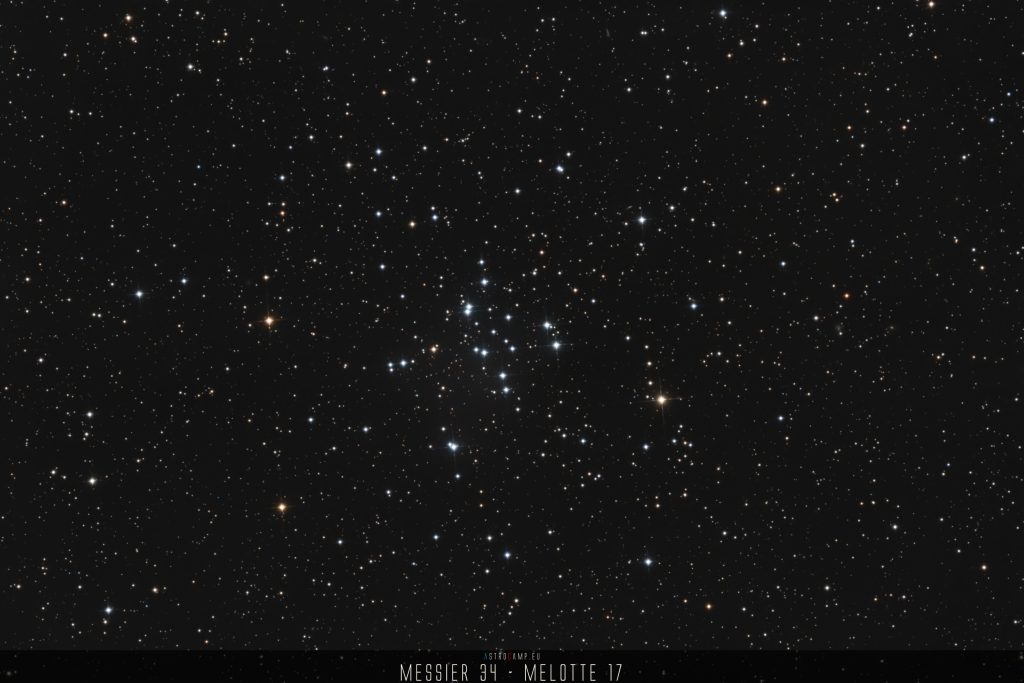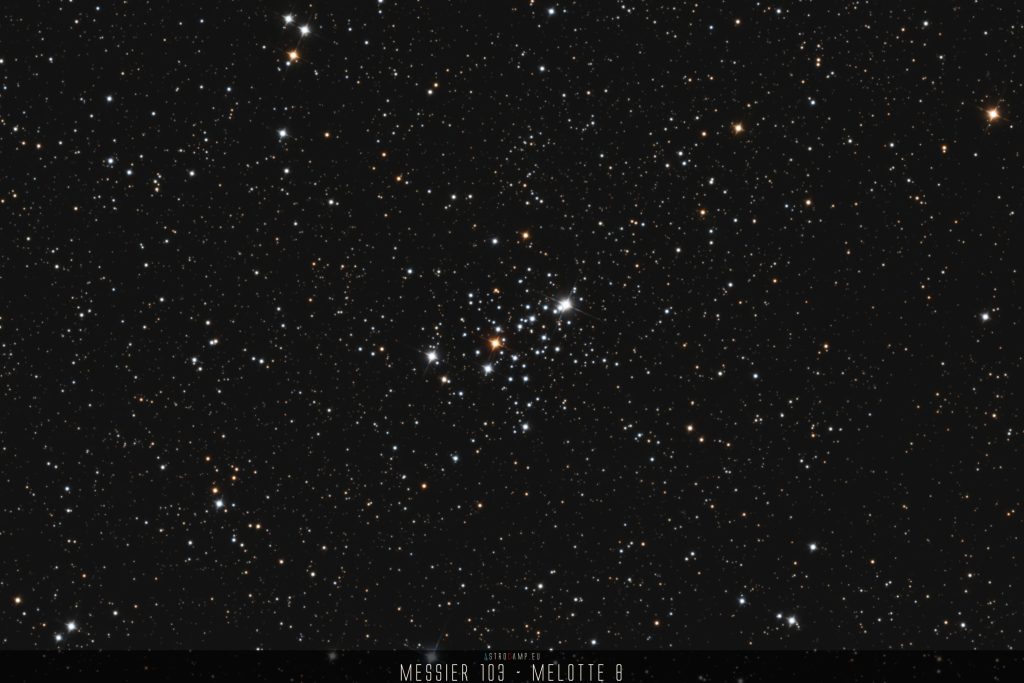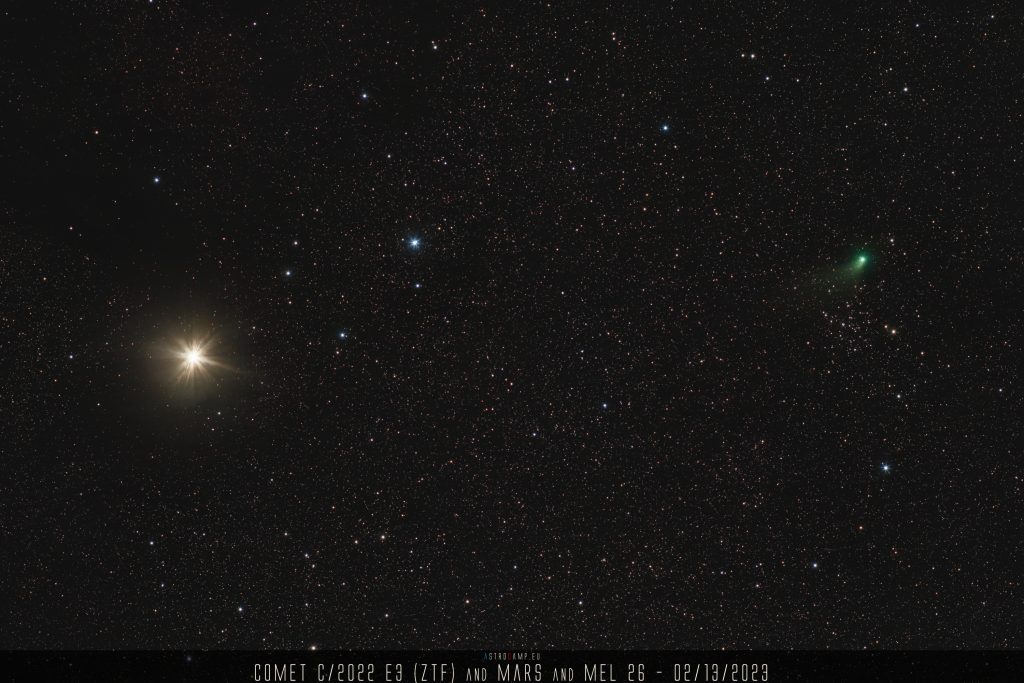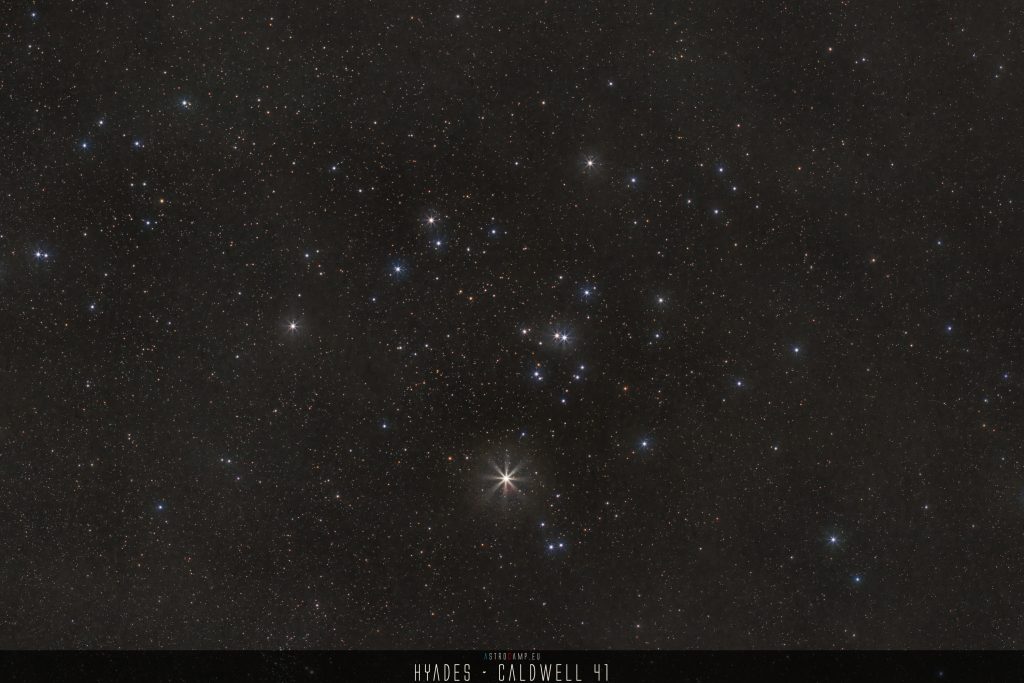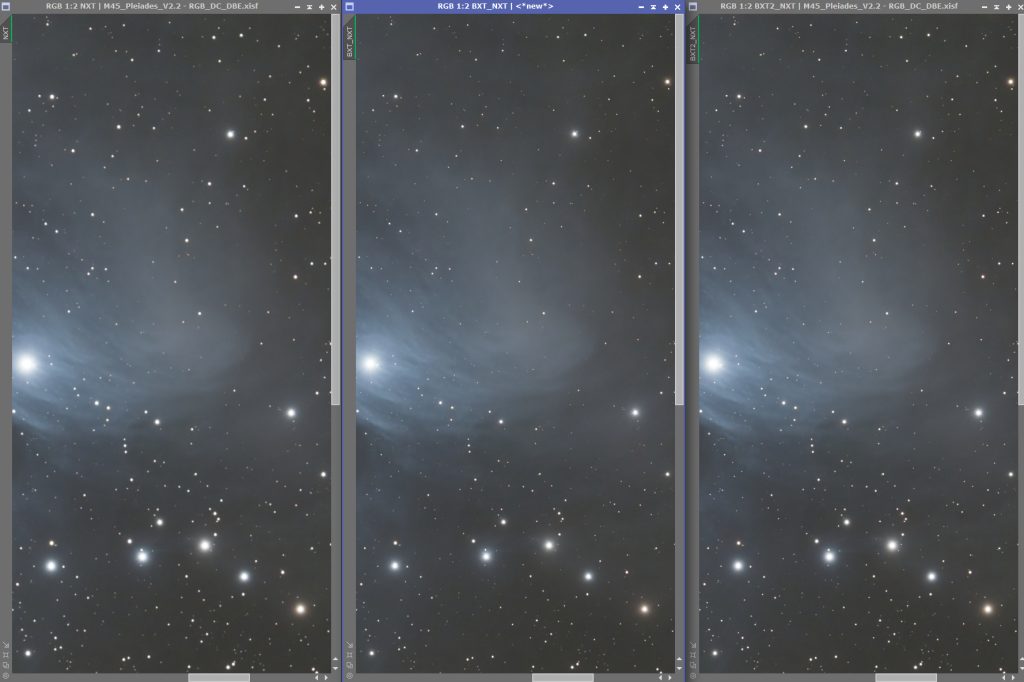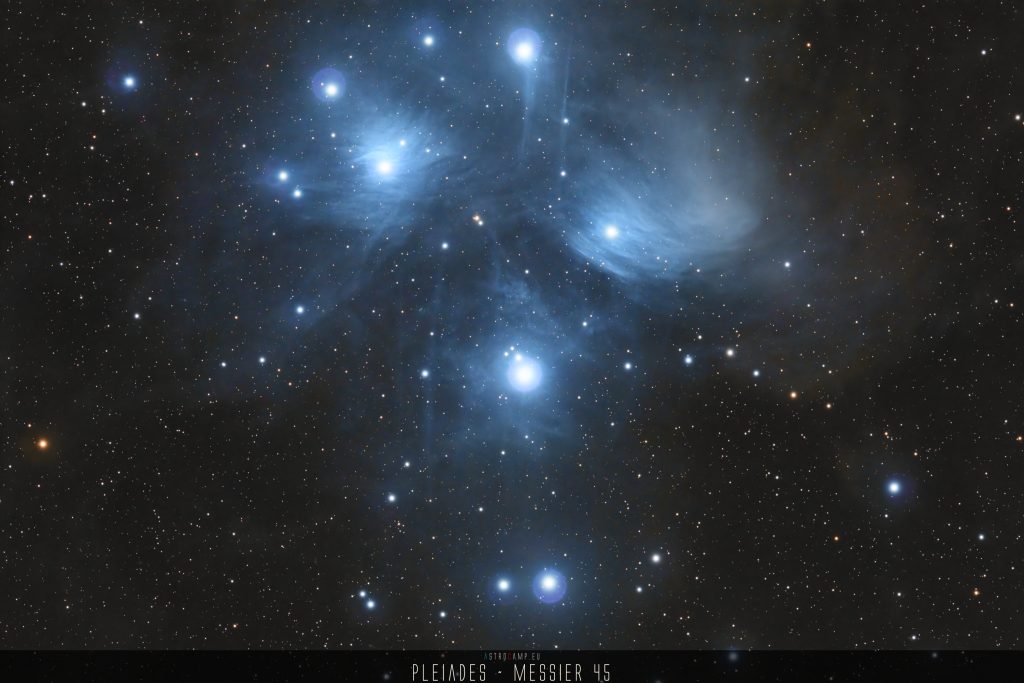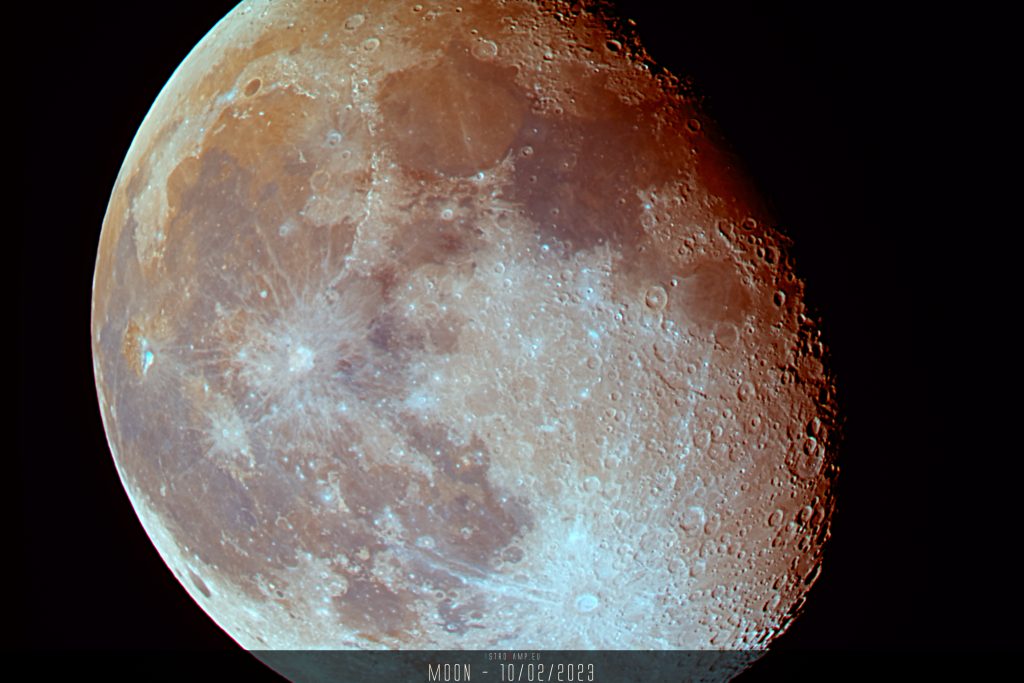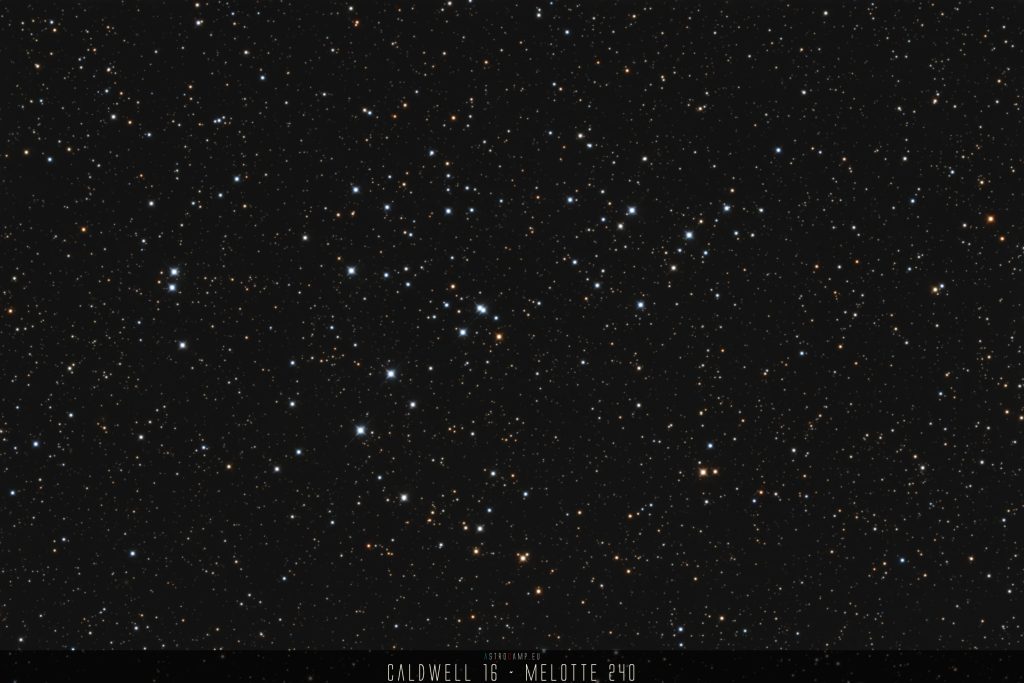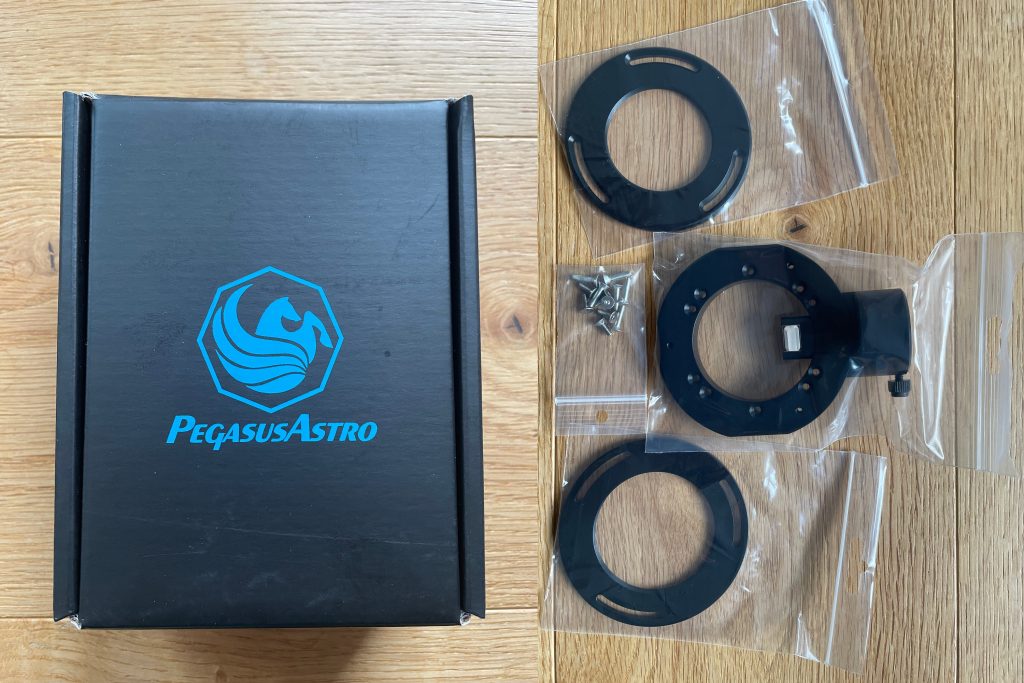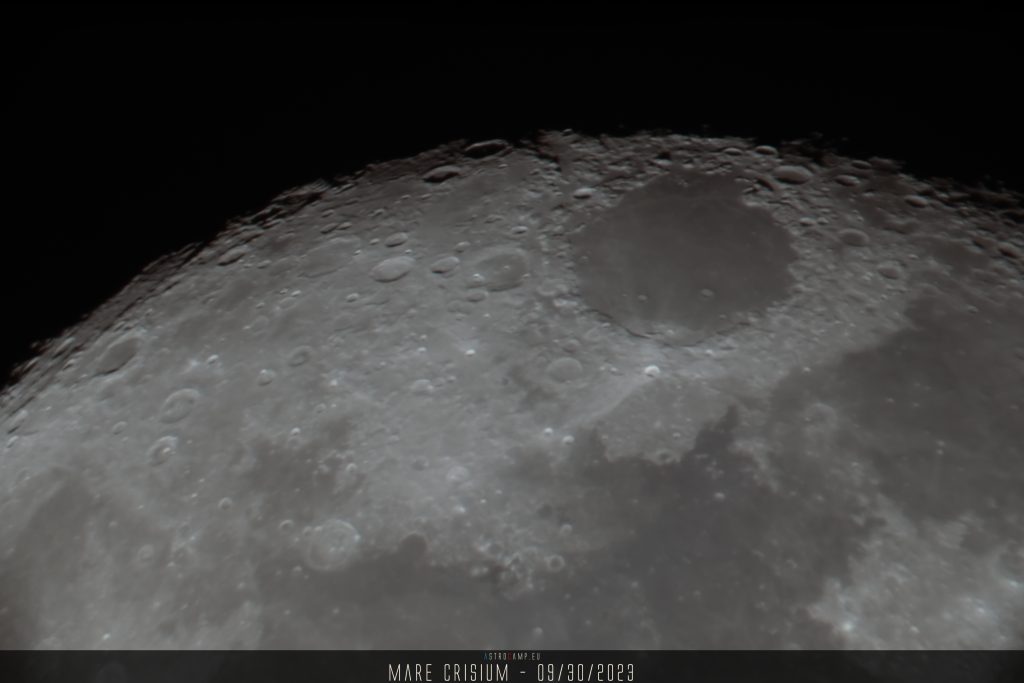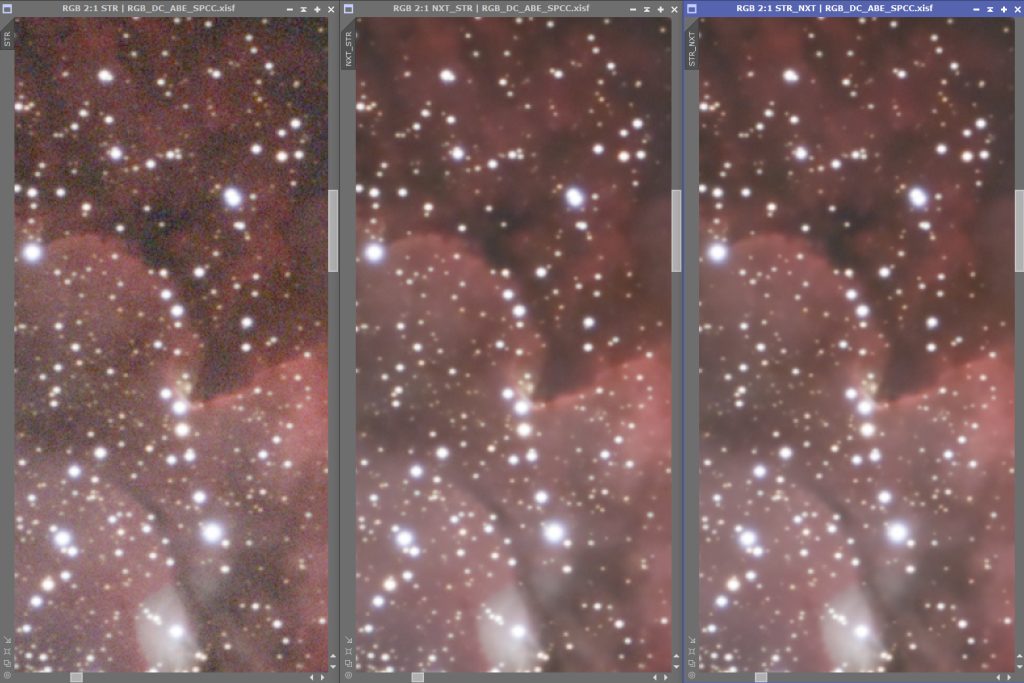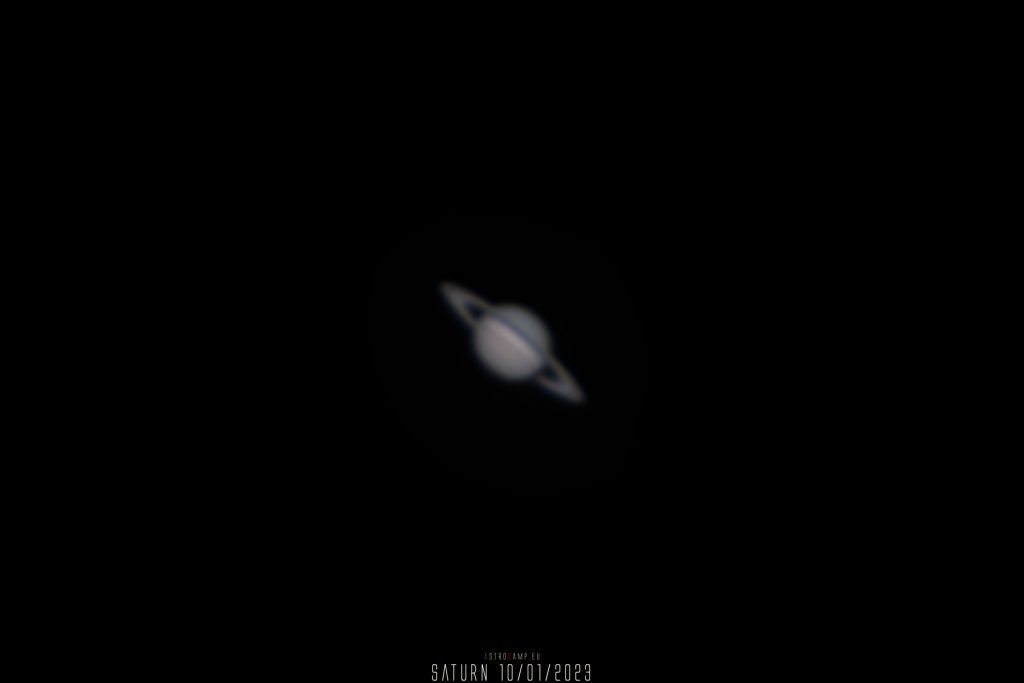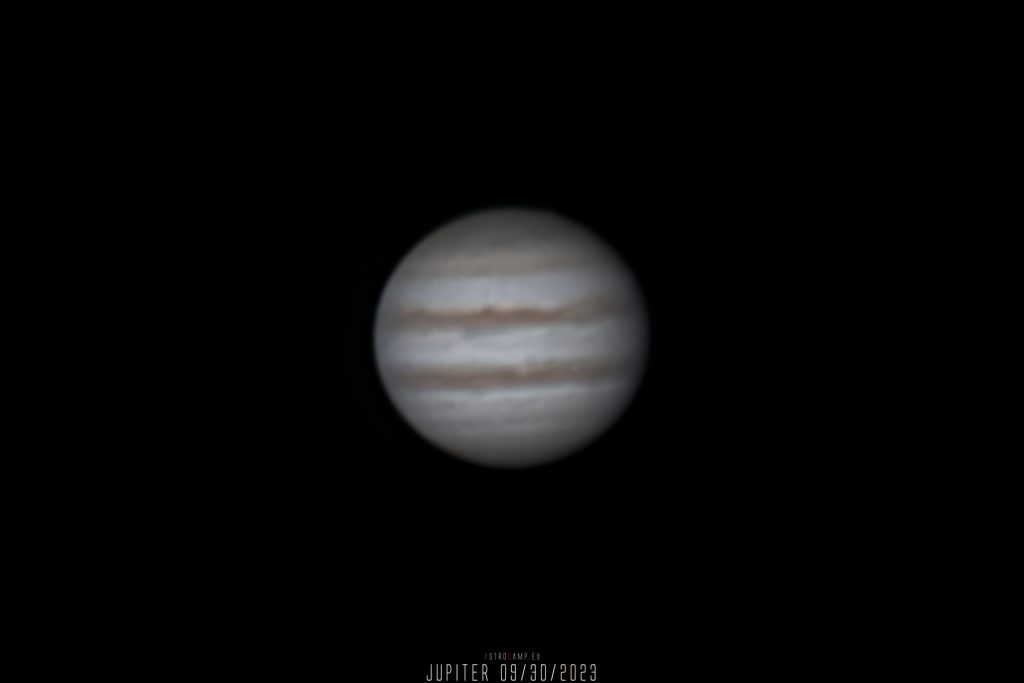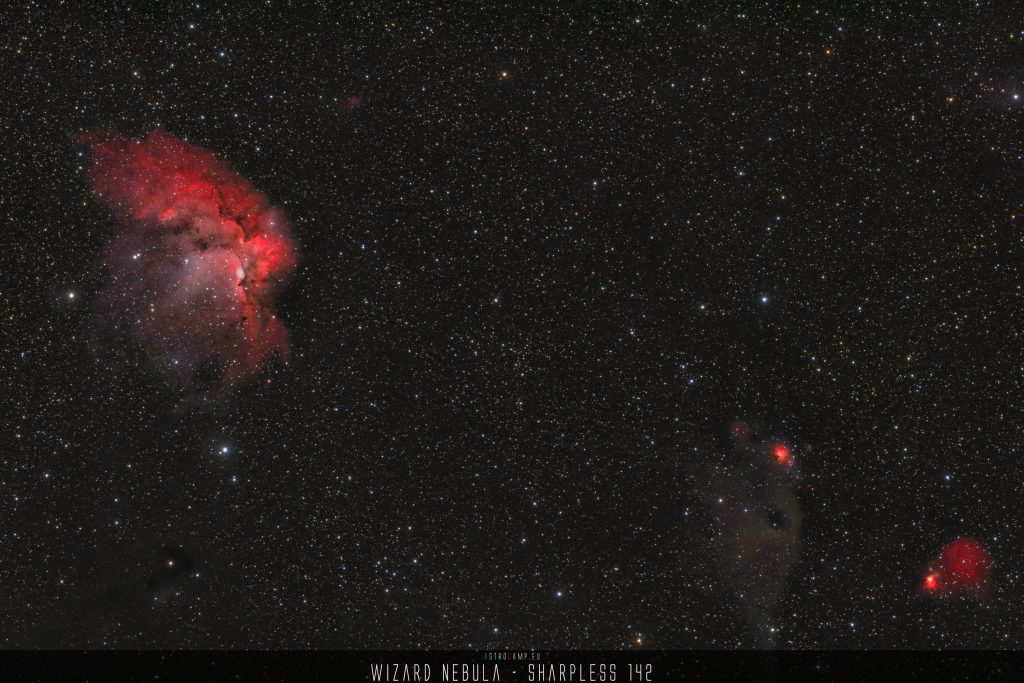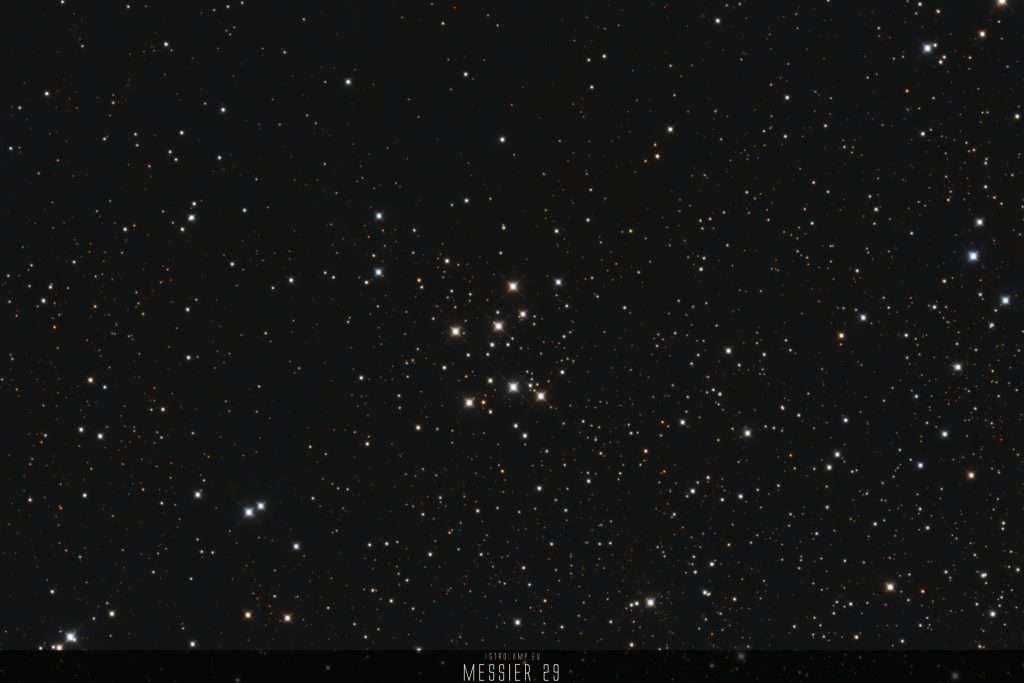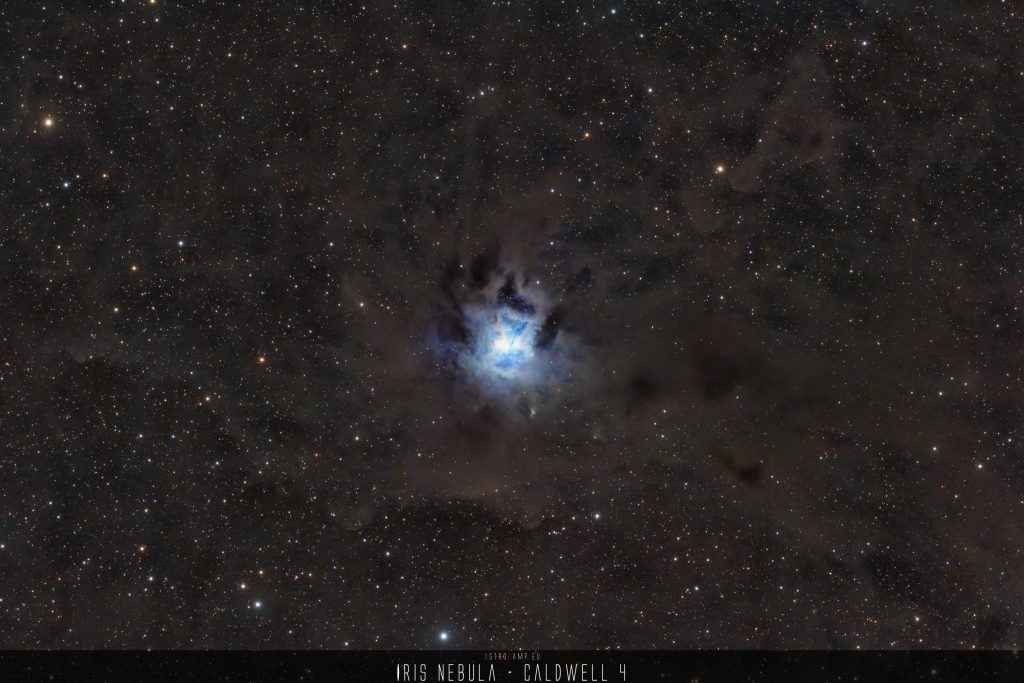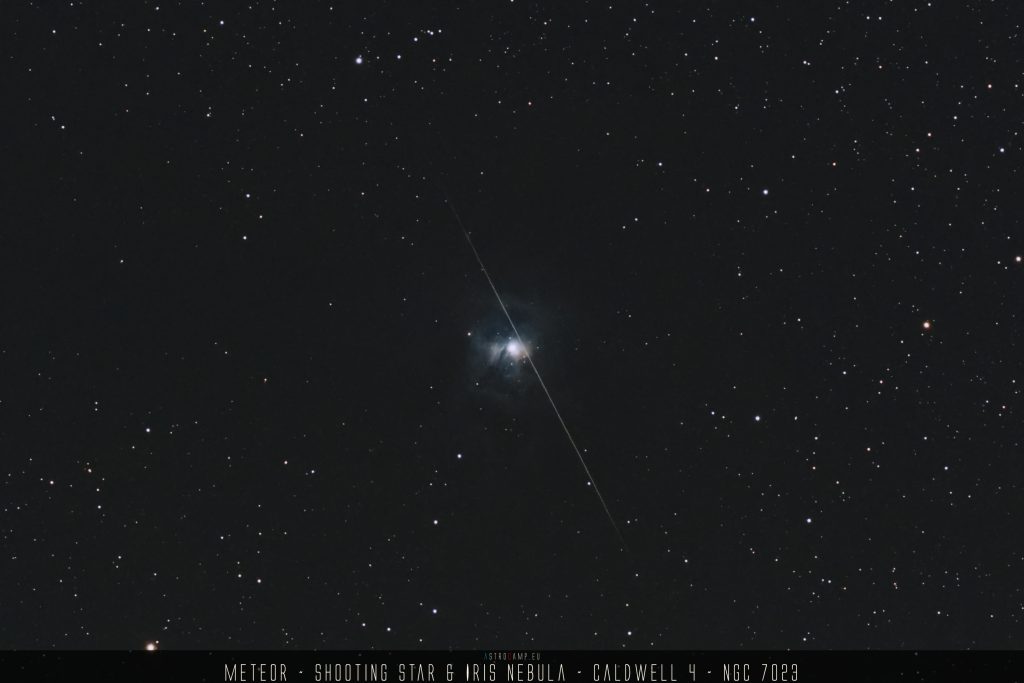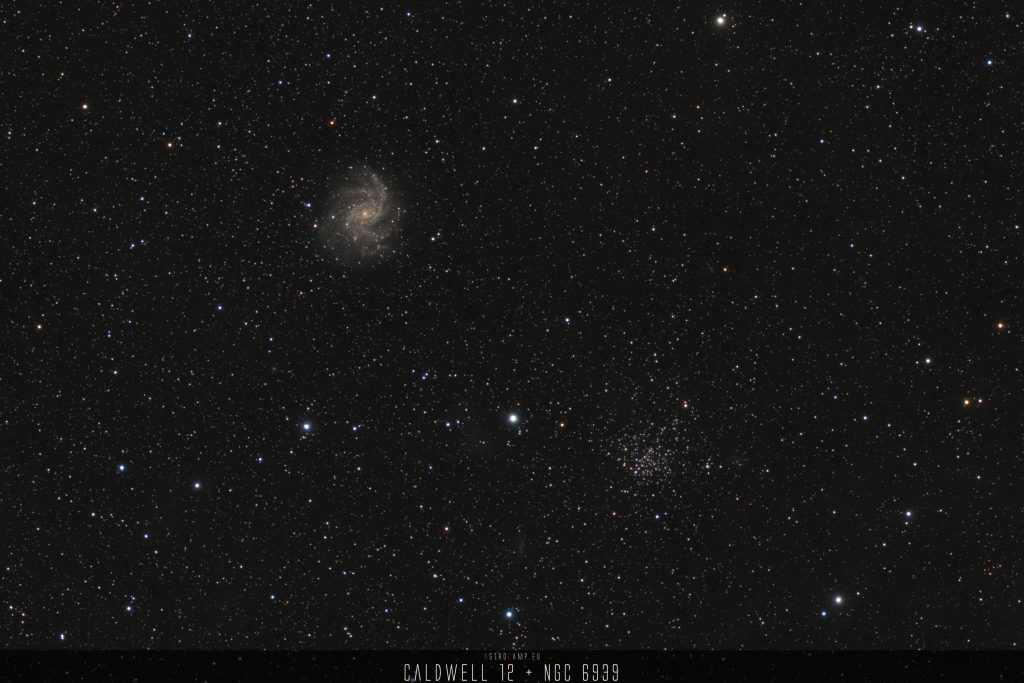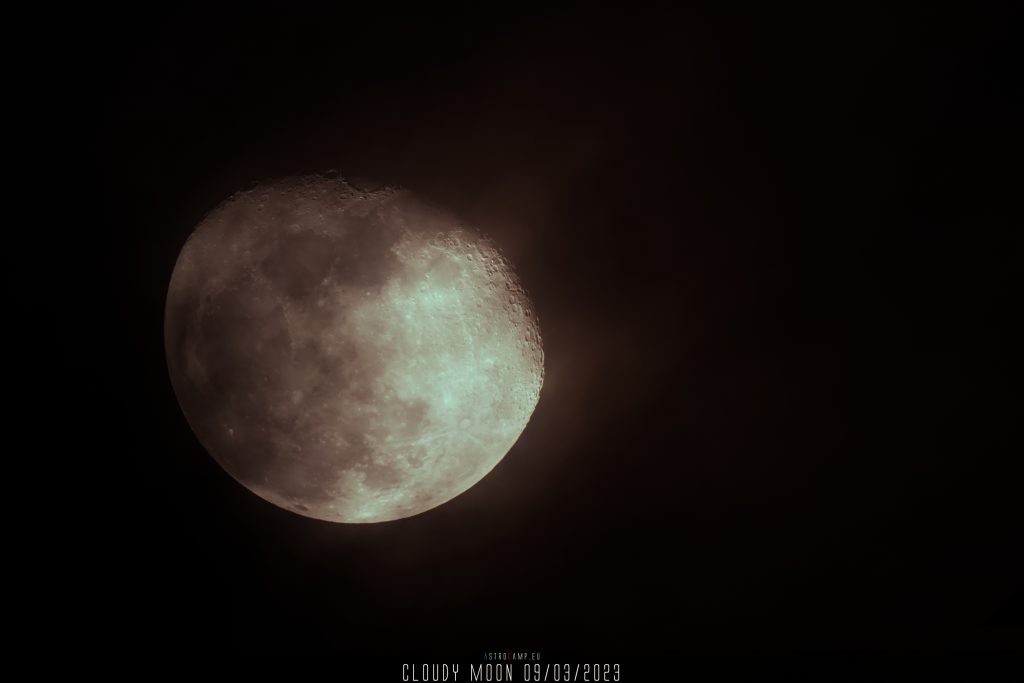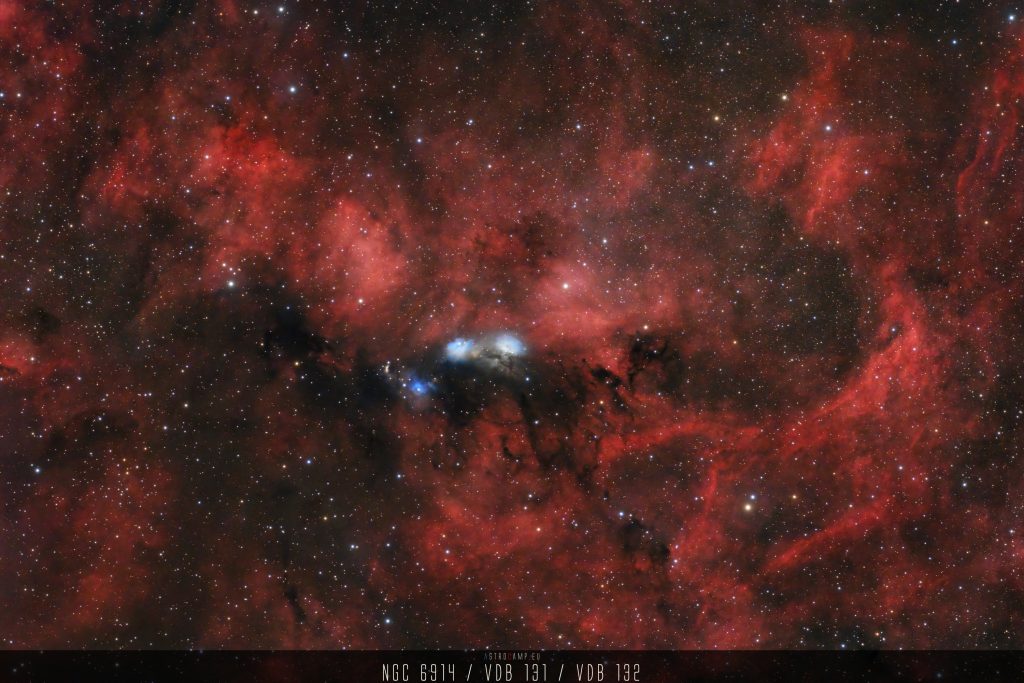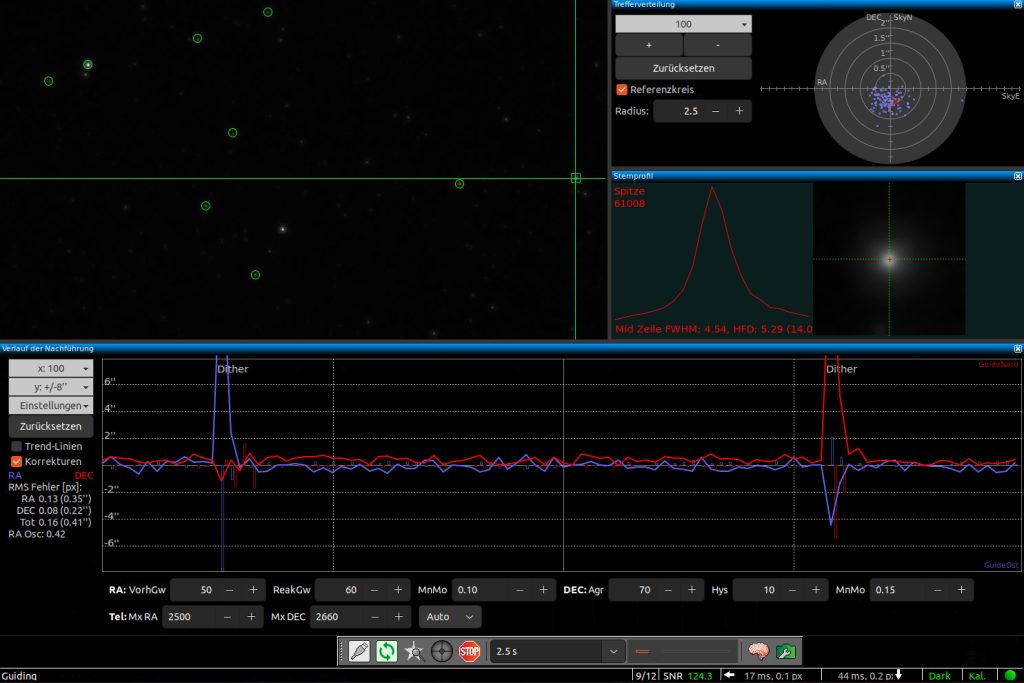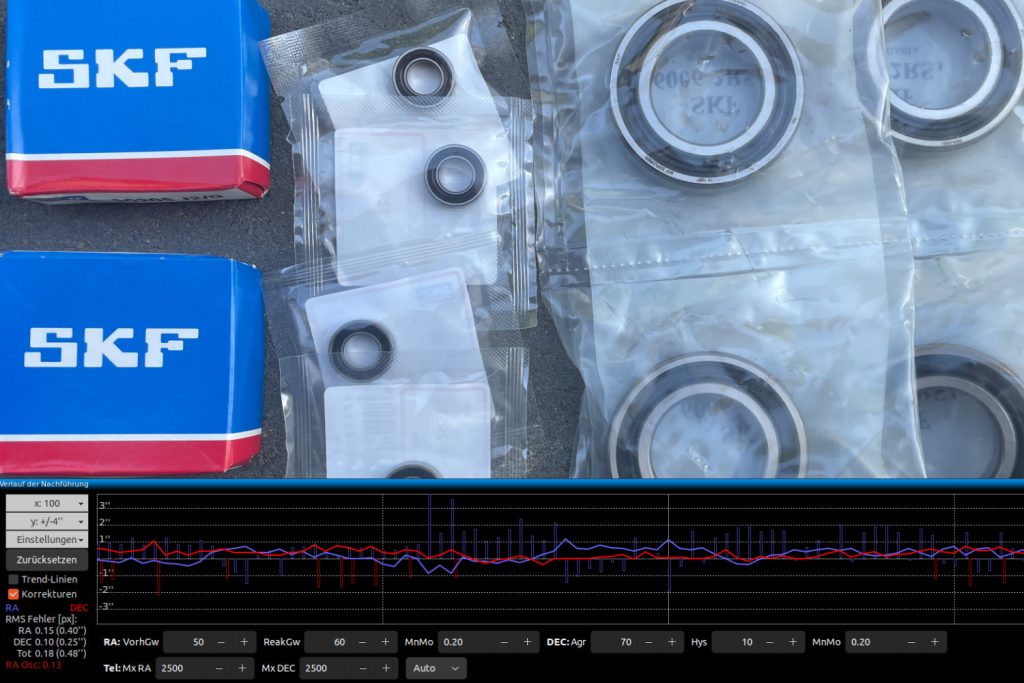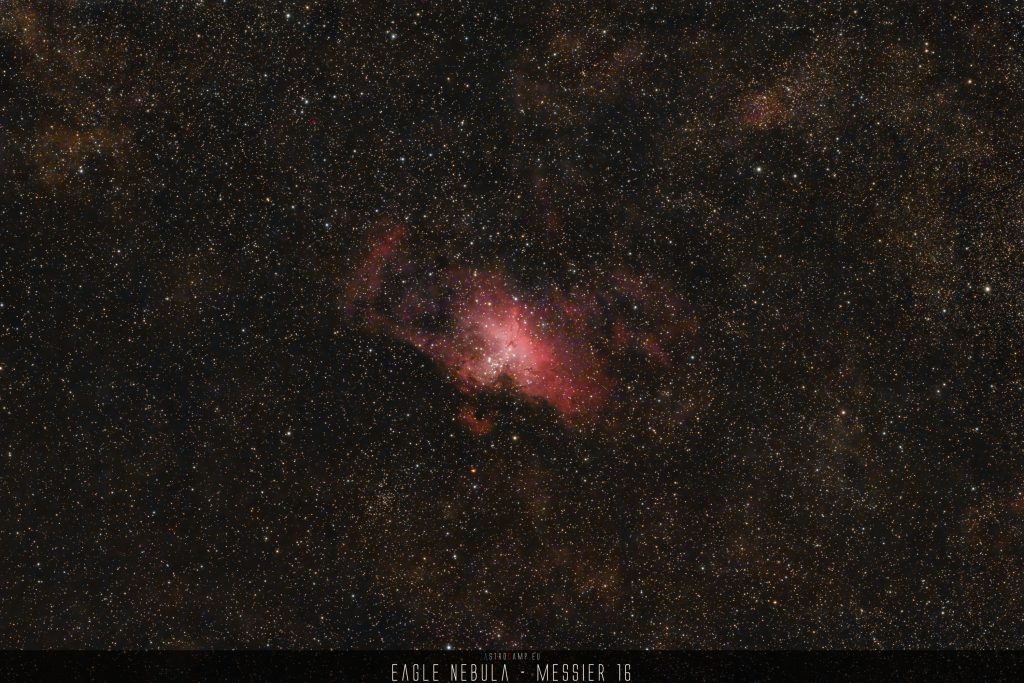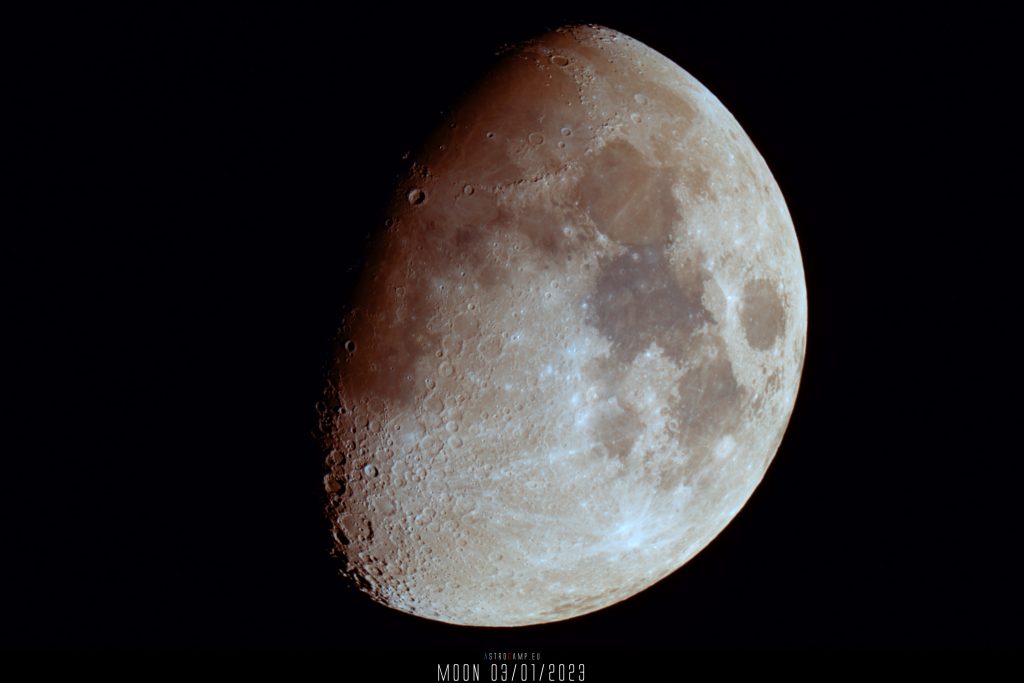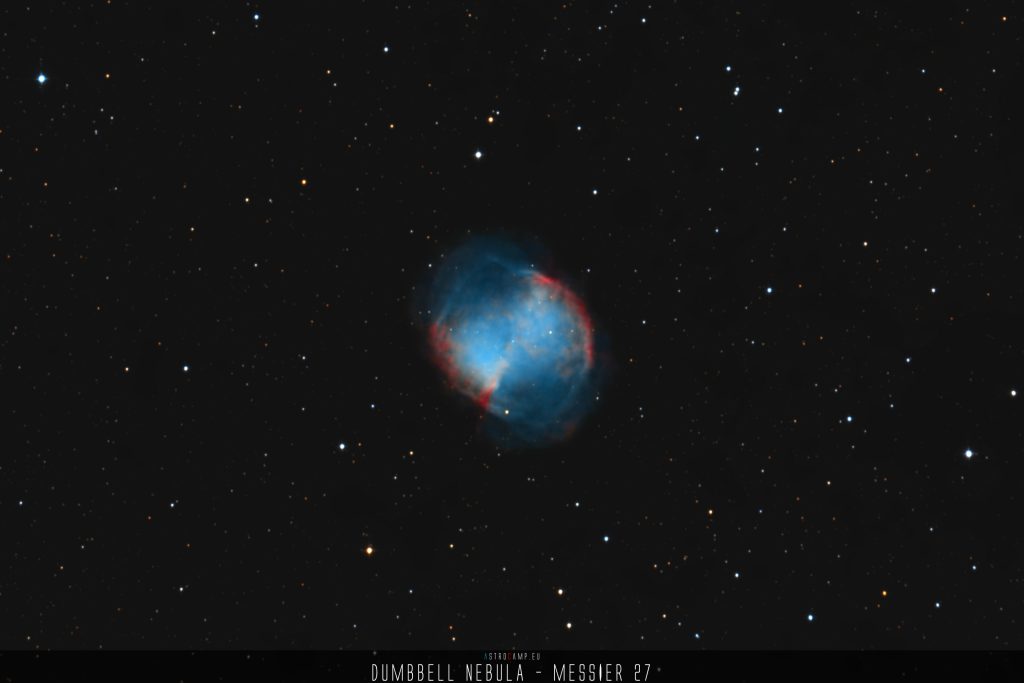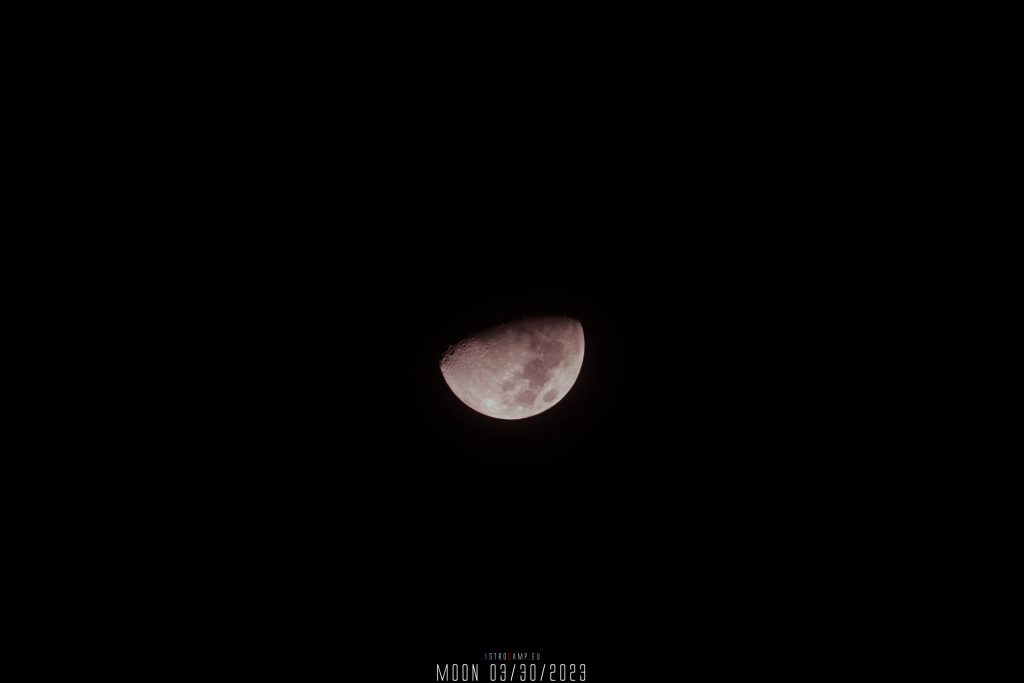NGC 3628, commonly referred to as the Hamburger Galaxy due to its edge-on orientation, is a spiral galaxy situated approximately 45 million light-years away in the constellation Leo. It is part of the Leo Triplet, a group of galaxies that includes M65 and M66. NGC 3628 is notable for its prominent dust lane and tidal tail, which result from gravitational interactions with its neighboring galaxies.
List of names or catalog numbers for this object
- UGC: 6350
- NGC: 3628
Position and cosmic neighborhood of the stellar object
NGC 3628, the Hamburger Galaxy, resides in the constellation Leo and is part of the Leo Triplet, a small group of galaxies located in the northern celestial hemisphere. Positioned approximately 45 million light-years away.
4 most special facts about this object
- Part of the Leo Triplet along with M65 and M66.
- Notable for its edge-on orientation, revealing a prominent dust lane and tidal tail.
- Distinctive appearance due to gravitational interactions with neighboring galaxies.
Details of the stellar object
Brightness: Magnitude ~9.4
Distance: Approximately 45 million light-years
Size: Approximately 120,000 light-years in diameter
Size in arcminutes: ~9.4 arcminutes

